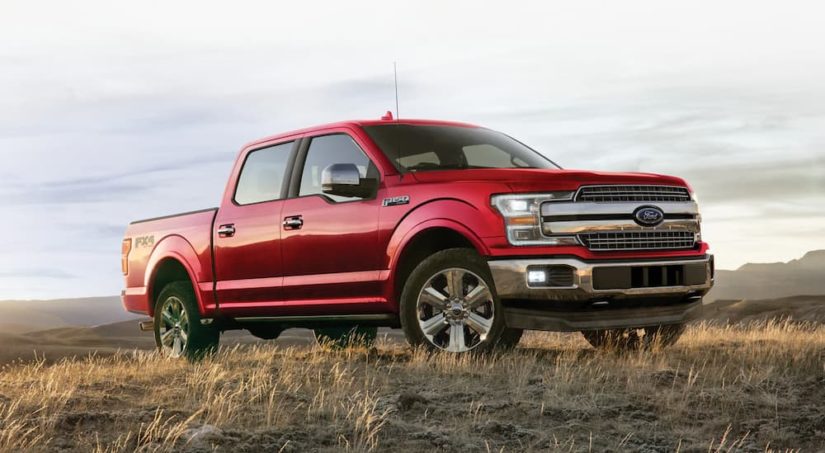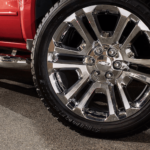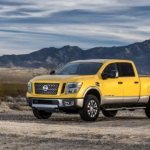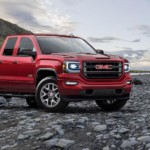If you’re searching high and low for a used Ford F-150 dealer–or any dealer for that matter–to uncover the best deal on a quality pickup truck, you’re not alone. The pickup truck segment has exploded in recent years as mainstream buyers flock to the category to escape the sameness of an SUV. From the coveted truck bed to better towing capability, nothing beats a pickup truck for pure utility.
Now that automakers like Ford are spending time upscaling cabin space, even suburban families are saying yes to pickups. Sure, SUVs still represent over 50 percent of overall vehicle sales in the U.S., but for some, the vanilla styling and combined cabin and cargo area are getting a little boring. We think it’s more than a trend: the migration from SUV to pickup is picking up steam.
As America’s best-selling truck for decades, the F-150 is uniquely positioned to win this special segment of buyers. No one needs to nudge Ford, either, because it’s clear that the company gets it. Here’s a look back at the last few generations and the F-150’s metamorphosis from a work truck into a universally desirable passenger vehicle.
11th Generation (2004 to 2008)
The eleventh generation F-150 ushered in the beginning of the transition to more creature comforts, better ride handling on pavement, and larger overall cabin dimensions. The 2004 model year was also highlighted by a sleeker exterior profile and initially came in six trims, the most luxurious of which was the Lariat. Navigation joined the growing list of luxury features in 2006, continuing the F-150’s transformation from rugged and durable to rugged, durable, and luxurious.
The eleventh generation also showed evidence that Ford engineers were focused on ride quality. Tweaks to the platform and frame, coupled with other changes like locating the rear shocks on the frame’s outer edges, softened the ride and created better handling. These seemingly small changes combined to give the F-150 a much more drivable vibe, which attracted everyday commuters and other non-traditional buyers to the pickup segment.
The six available trims included the base XL, featuring cloth seats, a 4.2-liter V6 engine, stick shift transmission, and manually operated doors, windows, and exterior mirrors. The STX added aluminum alloy wheels, a center armrest, and a handful of cabin upgrades. Next, the XLT included chrome accenting on the exterior, keyless entry, and power door locks, windows, and mirrors. The high-end Lariat added two-tone paint, heated mirrors, 18-inch wheels, automatic temperature control, and leather-trimmed seating.
Situated just below the Lariat was the F-150 FX4, an off-road-ready trim that featured a standard 5.4-liter Triton V8 engine, a limited-slip rear axle, underbody skid plates, special off-roading shocks, and FX4 badging on the truck’s exterior. Other features on the FX4 included body-color bumpers and off-road rubber floor mats.
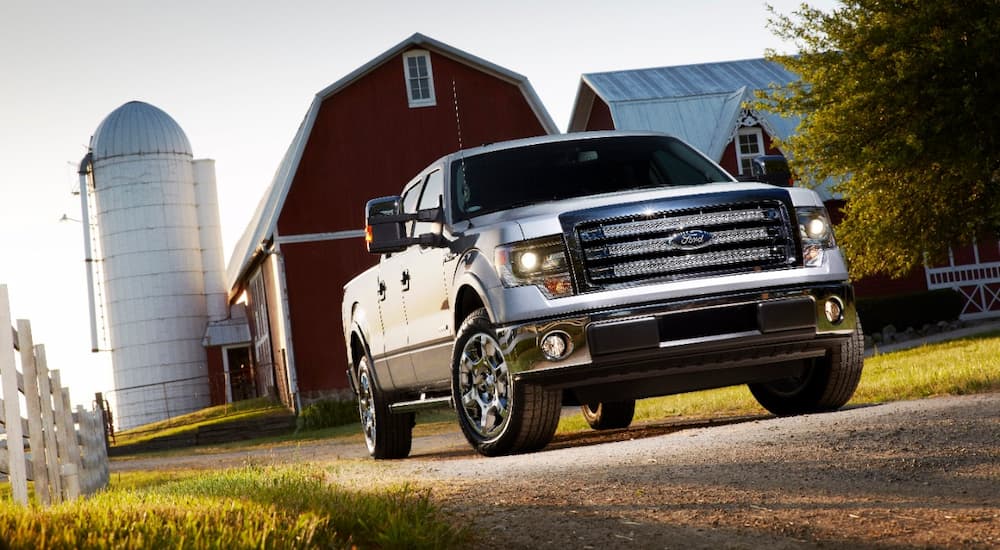
12th Generation (2009 to 2014)
Spanning six model years, the twelfth generation F-150 continued Ford’s commitment to offering a broader, more luxurious trim range without leaving behind commercial fleet buyers. It was during this generation that Ford abandoned the manual transmission altogether, and late in the series, Ford introduced the fuel-efficient EcoBoost engine lineup.
In 2011, Ford discontinued the smaller Ranger pickup due to diminishing compact truck demand, making the half-ton F-150 the smallest available Ford pickup. It’s also notable that the twelfth gen is when Ford introduced its first-ever SVT Raptor off-road trim, a nameplate that still gives performance truck buyers goosebumps even today.
Most trims in this generation saw an upgrade to its standard creature comforts, and over the years, the trim range evolved to include the King Ranch, the Limited, the ultra-luxurious Platinum, and even a Harley Davidson model. The series began with only V8 engines available, but in 2011 Ford added an entry-level 3.7-liter V6 and a potent 3.5-liter twin-turbo V6 bearing the EcoBoost name.
The SVT Raptor generated lots of buzz among automotive journalists. As the highest performance F-150, it held its own as the flagship model, which is unsurprising considering it featured a 411 horsepower 6.2-liter V8 borrowed from the heavy-duty Super Duty lineup. The Raptor also included a trim-exclusive wide-track suspension and other off-road traction-enhancing equipment.
13th Generation (2015 to 2021)
It’s within the thirteenth generation that used F-150 buyers are most likely to find a low mileage Certified Pre-Owned (CPO) model. It’s also the generation that saw the first semi-autonomous driver-assist features. This lighter weight F-150 shaved 700 pounds off its bulk, thanks to the extensive use of aluminum body panels. Add to that a larger lineup of EcoBoost engines, and fuel economy improved substantially.
The thirteenth generation F-150 debuted with a long list of standard and available driver-assist technologies, including adaptive cruise control, lane keep/lane departure assist, blind-spot alert, and a collision warning with automatic emergency braking. This generation also featured the first-ever 360-degree surround-view camera. Even the frame was upgraded with safety in mind, going from 23 percent high-strength steel to 77 percent.
Available in regular cab, SuperCab, and the largest SuperCrew four-door cab style, the thirteenth generation F-150 was at home on the job site and the carpool line. In 2017, Ford reintroduced gen two of the Raptor. It featured a trim-exclusive 5.5-foot bed and a smaller, more powerful 3.5-liter twin-turbo V6 that delivered a monstrous 450 horsepower and 510- lb-ft of torque.
A refined trim range turned the old FX off-road nomenclature into a trim but stuck with more familiar names, including the XL, XLT, Lariat, King Ranch, Platinum, and Limited. The National Highway Transportation Safety Agency (NHTSA) even bestowed its highest five-star overall crash test rating on the thirteenth generation truck, making it the first-ever F-150 to earn the honor.
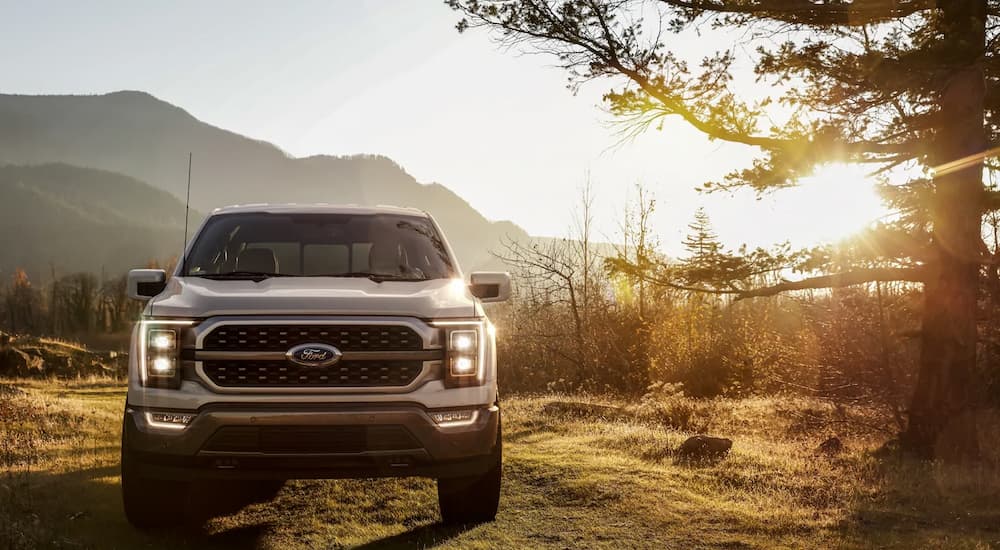
Which Used F-150 is Best?
As America’s most popular pickup, finding a used F-150 was already challenging. Add the newest crop of SUV-weary mainstream luxury pickup buyers, and competition is fierce. Luckily, Ford dealers sell hundreds of thousands of F-150 trucks every year. Some model years–like 2005 and 2019–even reached into the 900,000-unit volume range.
If your needs skew more to the job site or other commercial work, Ford hasn’t forgotten you. In fact, base trims still keep creature comforts to a minimum so that the price stays affordable. Look for a pre-owned XL, and keep in mind that newer generations feature more standard bells and whistles. For example, a 2008 F-150 XL includes an AM/FM radio, and air conditioning, while a 2018 model gets you a 4.2-inch display screen.
Upmarket buyers will find plenty of luxury features on high-end trims like the Lariat and King Ranch in earlier generations and the Limited and Platinum on newer trucks. The 2005 F-150 Lariat sat at the top of the lineup, offering leather seats, 8 cup holders, power rear windows, and manual lumbar settings. Flash forward to the 2018 F-150 Limited, and you’ll find a multi-speaker B&O sound system, plentiful infotainment technology, and heated seats and steering wheel.
In short, there’s a used F-150 for almost everyone. Pick from a crop of well-equipped trims or affordable work-ready base models. Used buyers are all but guaranteed to find a great high-quality truck from the eleventh, twelfth, or thirteenth generations. Whether you’re hauling payload to the job site or your kid’s friends to a soccer game, there’s an F-150 that’s up to the task, and that’s why the F-150 is a best-seller.
